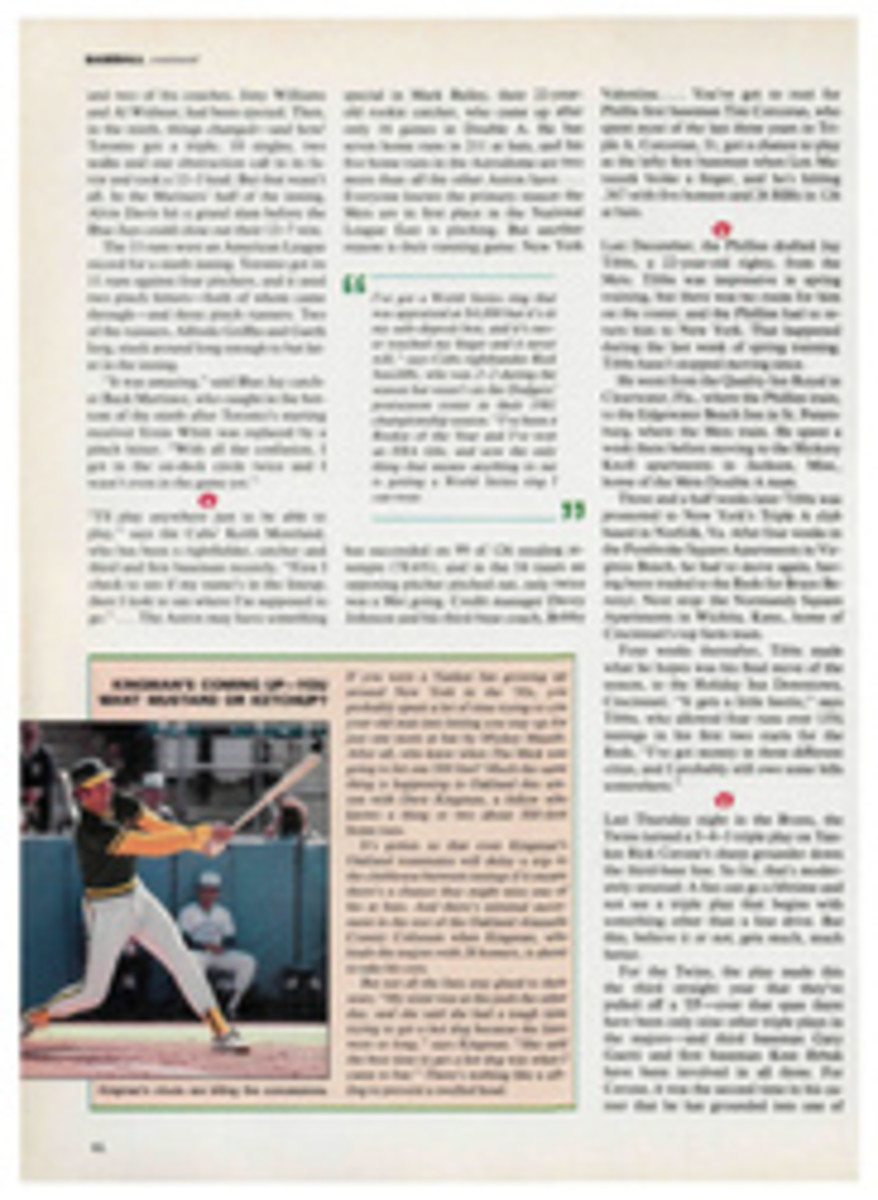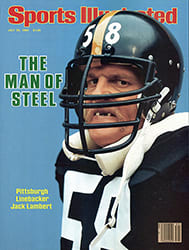
THIS ST. ANDREWS INITIATE SHOWED HE'S NOT ONE TO HUNKER IN A BUNKER
The Jigger Inn in St. Andrews, Scotland is the tiniest pub you've ever seen. If it were any smaller, it wouldn't be. It seemed an unworthy place in which to announce my historic deed. And Alistair seemed an unworthy audience. But that's the way of things.
The Jigger is in a hotel that sits just off the fairway of the 17th, the awful Road Hole, at St. Andrews. It was there that I ran into Alistair. He's a caddie, and he was dry.
The gods of golf brought us together last July at the completion of my round on the Old Course, which is regarded as the birthplace, or at least the cradle, of golf. I'd been playing golf for some time, free of the burdens of talent, skill and hope, and I'd done nothing this day to damage my three-figure scoring average. I was halfway to the Jigger Inn when it hit me that I'd just accomplished a feat unprecedented in the 450 or so years that golf has been played at St. Andrews. I had to tell someone.
"Well, now," Alistair said, sitting back, "how was your first trip around the old girl?"
"Do you realize," I said, "that I've just played the Old Course—and never once hit into a bunker!"
"Really," Alistair said. "I'll have a pint of bitter."
I think Alistair lacked a certain perspective. I couldn't prove that no one had ever played a bunker-free round on the Old Course, but it's a good bet.
The Old Course is municipally owned and largely unchanged from the days when the locals used it for golf, for strolling and for grazing their sheep. The bunkers were what remained after sheep scratched for shelter from the winds coming off the North Sea, and after the townsfolk had dug for seashells.
In fact, those Americans about to make their first pilgrimage to the Old Course are in for a shock. Compared to the poodle-perfect layouts here, St. Andrews is an alley mutt. It's shaggy and lumpy. Half-Knickers—more on him presently—addressed this point when we reached the second tee and gazed out over gorse and other untailored flora. "It's not very pretty, is it?" he said. "If they're not going to pretty it up, at least they ought to give us carts to ride."
Half-Knickers is an American who, had selected for his golf attire that day a pair of almost incandescent red knickers. The right leg wouldn't stay knicked. He finally said the heck with it and walked around with the end of one knicker leg down around his ankle.
For his insult to the Old Course, Half-Knickers would get his in the gorse and in a number of bunkers, most grievously in the Hill bunker at No. 11. Many of the St. Andrews bunkers have names. There are, for example, the Hell, the Beardies and the Principal's Nose. My favorite is the Sutherland. It was named after a fellow who, they say, spent more time in it than he did in his own home.
At the 11th hole, where Bobby Jones picked up his ball and quit the 1921 British Open and where Gene Sarazen once took a six from the Hill bunker, our caddie announced, "Gentlemen, this is the most difficult hole in the world."
The 11th is a par-3, 170 yards long, its green seeming to sit in the River Eden. Since I try to think like a golfer, in case I should hit the ball properly, I decided to aim slightly to the left and let the quartering headwind bring the ball into the green. Damned if I didn't hit the most gorgeous fade you ever saw. The ball wheeled in like a gull, took a little bite and rolled right for the pin.
"Shot," the caddie said. "Shot" is the only compliment you'll get from an Old Course caddie. I finished off the world's toughest golf hole with a 12-foot putt that burned the cup and a tap-in for par.
There are no bunkers at No. 18. The threat is the Valley of Sin, that big swale in front of the green. But it's a problem only on the pitch-and-run shot, which just happens to be the recommended shot to the green. The usual small gallery of amusement seekers were hanging around behind the green as we approached. I don't think they saw me duck-hook my tee shot. Or dub my second.
For my third shot, I flat killed a three-wood. It rocketed toward the left-front corner of the green, then suddenly dived down and raced right through the old Valley of Sin (I'd forgotten the thing was there). The ball had a sense of destiny. It rolled right up on the green and stopped 20 feet to the right, pin high. I'd just hit a classic Old Course pitch-and-run shot. With a full three-wood. The gallery had watched all this in silence, but that shot wouldn't be forgotten.
I left my first putt on the lip and tapped in for my bogey 5. My round had come to an end, and I calmly left the green, not yet aware that I'd just stepped into Old Course history.
A voice came softly from behind me: "Shot."
I raised my hand, casually accepting the tribute.
"Accident," I replied.
ILLUSTRATION
PATRICK McDONNELL

